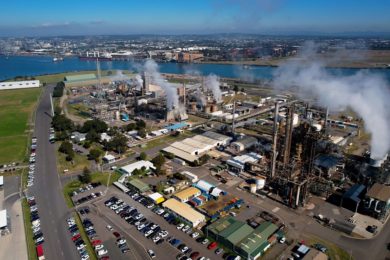Australian clean technology developer MCi Carbon has, today, held a foundation ceremony for its carbon capture and utilisation (CCU) plant ‘Myrtle’, currently under construction at Orica’s Kooragang Island site.
Funded by a A$14.6 million ($9.7 million) federal government grant, the plant is aimed at scaling up the development and demonstration of an engineering process called mineral carbonation, which transforms captured carbon dioxide (CO2) emissions into building products and other valuable materials.
The technology has the potential to provide a cost-competitive solution for decarbonising hard-to-abate industries globally and contributing to the circular economy, according to MCi Carbon.
Orica Managing Director and Chief Executive Officer, Sanjeev Gandhi, said the project, which is expected to be operational by 2025, aligns with Orica’s sustainability and commercial goals.
“The energy transition requires careful planning and policy coordination between governments, regulators, energy suppliers, consumers and the broader private sector,” he said. “This ceremony today is a great example of business and government working together to drive innovation for a better tomorrow, as we transition towards a lower carbon future, together.
“We are proud to partner with MCi Carbon, industry, academia and the government as they scale this important technology.”
The CCU plant will source its CO2 directly from Orica’s ammonia manufacturing facility, capturing around 1,000 t of the greenhouse gas annually. In addition to supplying the feedstock, Orica has supported the project by providing land, access to utilities and significant technical expertise.
Partnering with MCi Carbon is the latest example of Orica’s commitment to decarbonising its operations. Recently, the company completed a A$37 million project to install tertiary abatement technology on the Kooragang Island site’s three nitric acid plants, reducing greenhouse gas emissions by nearly 50%. That equates to 11% of all chemical process across Australia.
The tertiary abatement project will continue to eliminate 567,000 t of CO2 equivalent from the site each year, which is equal to the emissions from 50,000 homes.










